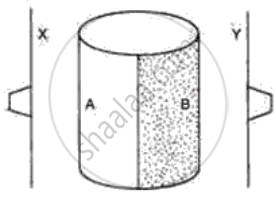Advertisements
Advertisements
प्रश्न
Give reasons for the following:
Even when the water in the lakes is frozen, fish can survive.
उत्तर
Even when the water in the lakes is frozen, fishes can survive due to anomalous expansion of water, water has maximum density at 4°C and this dense water remains at the bottom of the lake and the upper layer of water is less dense and freezes but the temperature of each layer of water below increases by 1°C. Thus it is warmer in the lakes below the ice layer. This helps the fishes to survive.C and this dense water remains at the bottom of the lake and the upper layer of water is less dense and freezes but the temperature of each layer of water below increases by 1°C. Thus it is warmer in the lakes below the ice layer. This helps the fishes to survive.
APPEARS IN
संबंधित प्रश्न
How does the anomalous expansion of water help aquatic organisms in cold climates?
Observe the following graph. Considering the change in volume of water as its temperature is raised from 0°C, discuss the difference in the behaviour of water and other substances. What is this behaviour of water called?

What do you mean by the anomalous expansion of water?
What do you understand by the anomalous expansion of water?
The following figure shows a metal cylinder, containing boiling water. One half side A is polished and another half, B is painted black. Two thin metal sheets X and Y are painted black and have one rubber stopper fixed with wax on each sheet. These sheets are equidistant from the boiling water (container A, B) as shown in the diagram. What would you expect to happen after a few minutes? Give a reason for your answer.

In a region with a cold climate the aquatic animals can survive at 4 °C, because _______.
While studying anomalous behaviour of water in Hope’s apparatus, the upper temperature of the thermometer : 0 °C : : lower temperature of the thermometer : _______
Draw a neat and labelled diagram of Hope’s apparatus.
